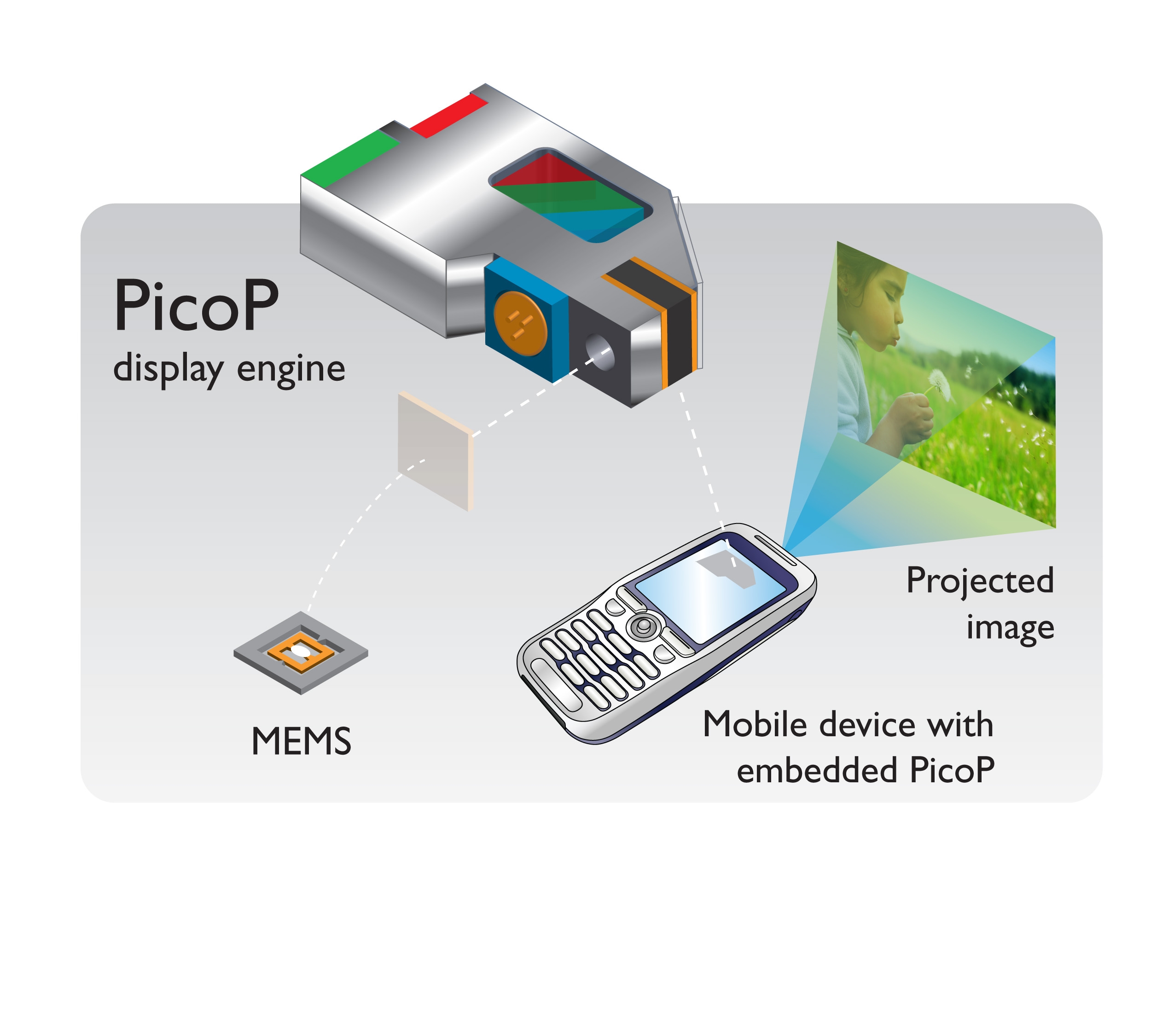|
|
|
Ultra Small (Pico) Projection Devices for Mobile Products
by Lawrence Harte
|
|
Mobile product manufacturers have a display challenge. They need to create small mobile devices that have displays that are large enough to provide an adequate viewing experience for the user. A key solution to this challenge is to embed a projector into the mobile device. When the device includes projection capability, the user can choose to use a small display for basic information (such as dialed telephone numbers) and large projection display for information rich media.
Figure 1.1 shows an example of how the Microvision PiocP projection system can be used in mobile devices. |
to have color capability to display a wide range of colors. The resolution of the display device should be at least 480 x 320 pixels (common for PDAs). Power consumption needs to be low enough to enables it to operate on a single battery charge for 1 day while sharing the battery resources with other systems such as a mobile telephone receiver. The device must only product a limited amount of heat, even when the device is continuously used for several hours. Finally, the device must be durable to ensure a drop test (typically 6' onto a solid floor).
|
|
|
This diagram shows that the mobile device has both standard small display capability and projection capability. This example shows that the projection capability is used to display pictures or videos that are stored or available to the user in the mobile device.
Until recently, there were several challenges that limited the ability to include projection capability into mobile devices. Some of the key issues included; size, color capability, resolution, power consumption, heat and durability. Size has to be small enough to fit into devices such as mobile telephones (less than 1 cm). The device needs |
Microvision has solved the key challenges of pico projection systems by using a mix of bi-directional micro-electromechanical system
(MEMS) scanners, miniature laser light sources, optical designs and electronic processing.
The accurate positioning of the laser light sources is performed by a MEMS scanning device. The display scanner uses a single tiny vibrating silicon mirror to produce an image. The beam of a laser light is reflected on the mirror which can rapidly move on two axes (bi-axial), which enables a single beam of light can to be precisely |

Figure 1.1 Microvision PicoP System in Mobile Device Source: Microvision |
|
|
|
steered. The micro mirror can quickly and precisely steer the optical beam in a raster-like process to project a complete video image.
MEMS devices are fabricated from a low cost small sliver of a semiconductor material such assilicon. The scanning mirror is very small (approximately one square millimeter) and the entire device can be less than 7 mm thick. The combination of small size, precise control and efficient use of optical signals results in a device that is small, rugged, has low power consumption and is capable of producing sharp color rich images.
Microvision has demonstrated a wide angle projection systems that can display WVGA resolution (854 x 480 pixels) in a 16:9 aspect |
ratio using a device that is only 7 mm thick. This device can provide a DVD-quality viewing experience from a package that can be embedded in some of the smallest mobile devices.
Figure 1.2 shows the Microvision Pico Projector (PicoP) system. This diagram shows that the ultra small projection device uses a mix of laser micro-electromechanical system (MEMS) scanner. The devices is 7mm thick and projects a wide screen video images up to several feet. |

Figure 1.2 Microvision Projection System Source: Microvision |
|
|
|
|
Mobile Video Magazine
Editorial Mission |
|

|
Mobile Video Magazine
identifies and explains the technologies and
applications that allow video and multimedia services to
be provided through mobile communication networks.
Readers learn about the types of systems and available
options that are necessary to implement mobile video
along with new features and applications and the
business opportunities that are available in the mobile
video industry. |
|